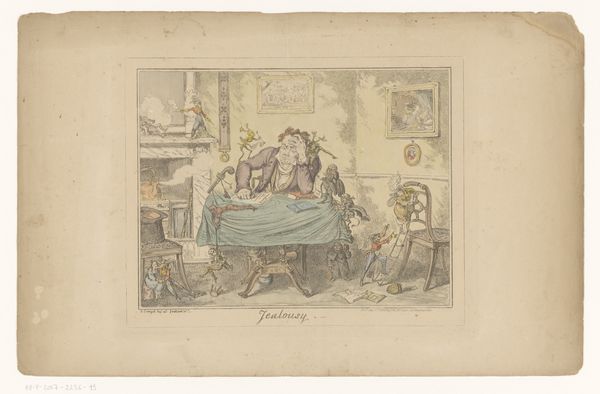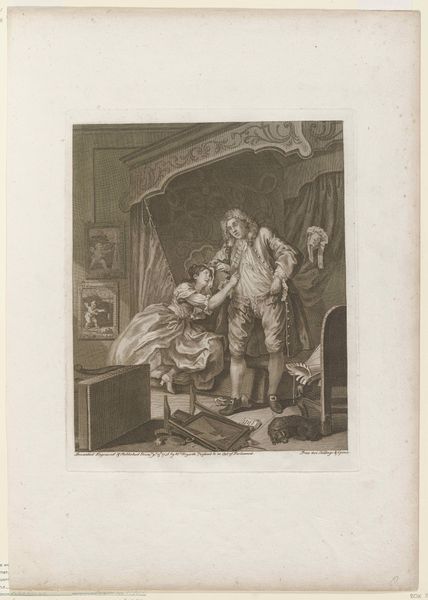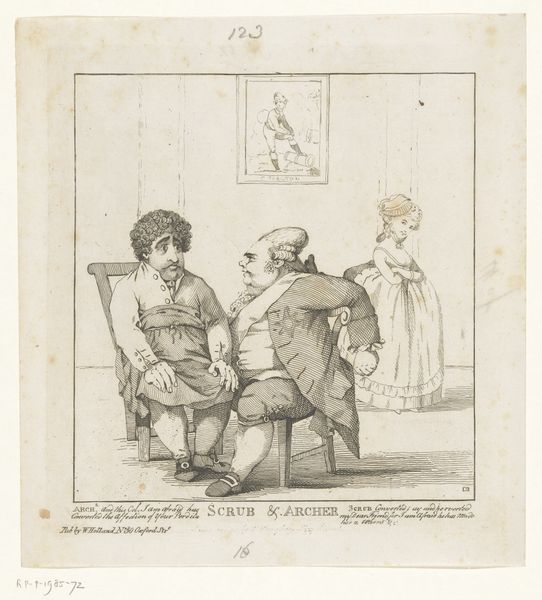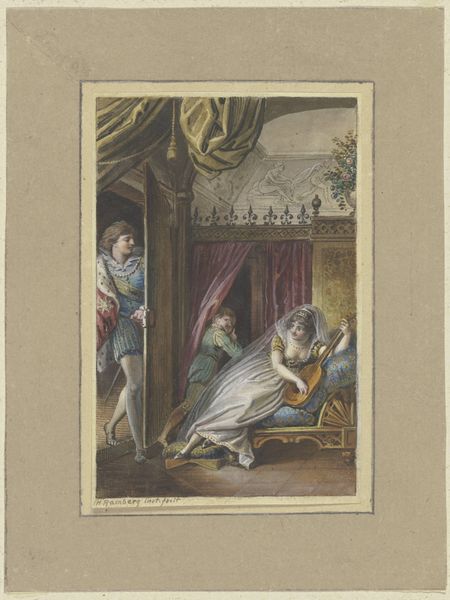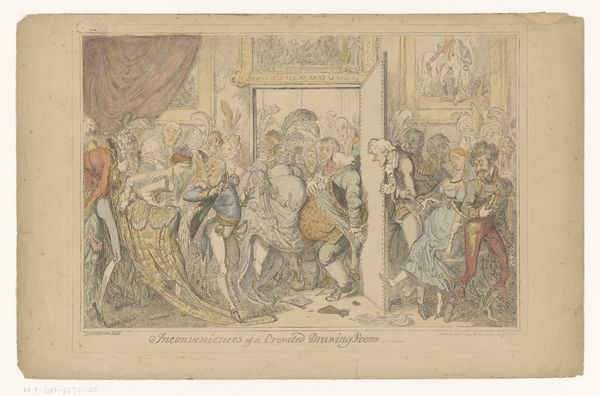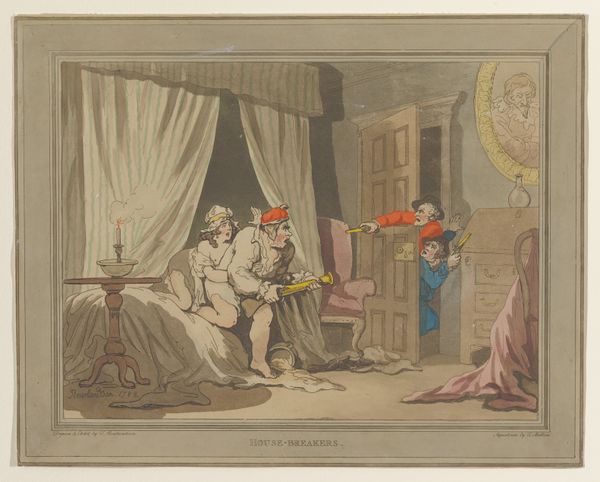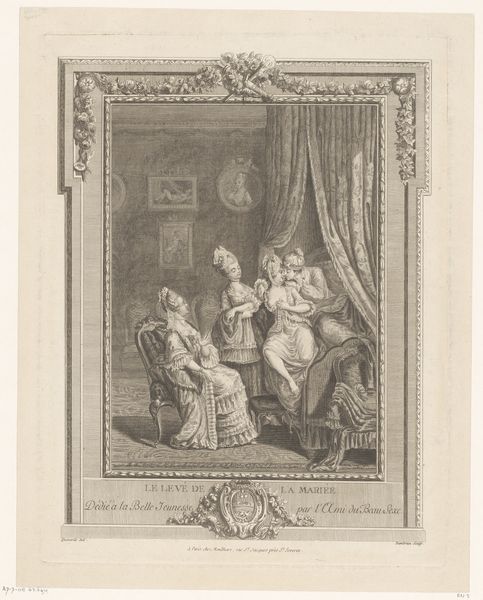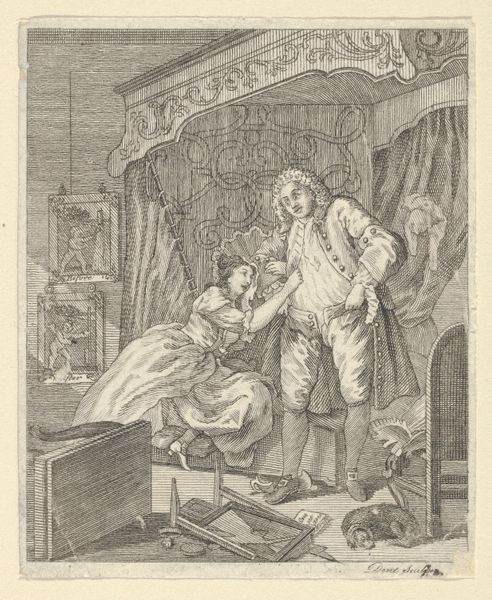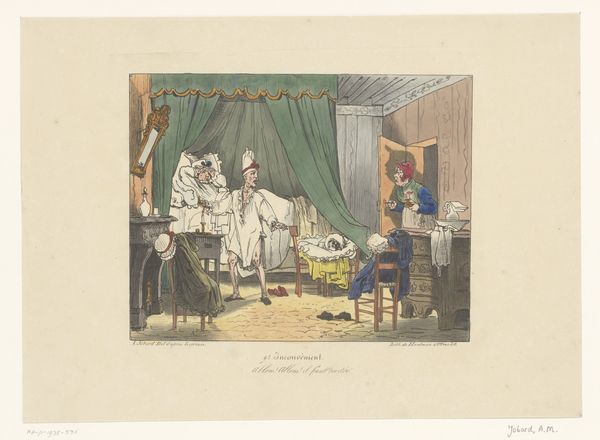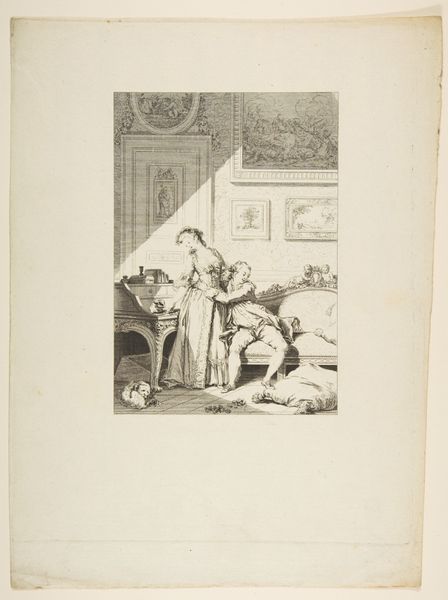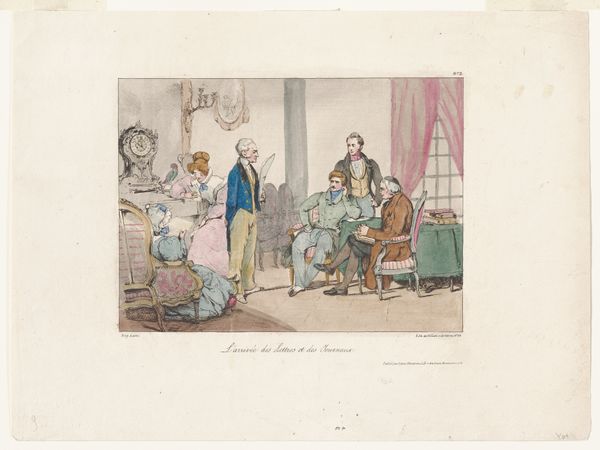
drawing, coloured-pencil, print, etching, watercolor
#
drawing
#
coloured-pencil
# print
#
etching
#
caricature
#
figuration
#
watercolor
#
coloured pencil
#
romanticism
#
watercolour illustration
#
genre-painting
#
history-painting
#
watercolor
Dimensions: height 276 mm, width 222 mm
Copyright: Rijks Museum: Open Domain
Curator: So, here we have Thomas Rowlandson’s “Four Men Looking at a Painting of Venus,” created around 1799. It’s a print, rendered with etching and watercolor, and it currently resides at the Rijksmuseum. Quite the suggestive scene, isn't it? Editor: Goodness, it's like stepping into a smoky back room! There's such palpable leering in the air! The watercolor softens what could have been quite a harsh satire, creating a strangely inviting—almost complicit—atmosphere. What do you make of their expressions? Curator: Rowlandson was a master of caricature, and here, we see that skill at play. The men, with their exaggerated features, embody a certain societal voyeurism, specifically the male gaze upon the female form—how power dynamics and expectations often dictated viewership, especially regarding classical nudes in this period. Editor: Right! And the painting within the print, Venus herself, seems almost indifferent to the crude ogling. Is it confidence? Or maybe exhaustion, being an objectified icon through the centuries? It's a funny paradox; she’s both central and completely passive. I find myself strangely sympathetic toward her situation... even in cartoon form. Curator: That tension between the men's active, consuming gaze and Venus's passive form is crucial. Consider how history painting during the Romantic period intertwined ideals of beauty with themes of morality, often placing women in positions of virtue or temptation, viewed, judged. Rowlandson uses satire as a critique. The choice to put these men in such a predatory posture reflects the societal imbalance. Editor: Makes you wonder what Rowlandson truly thought, doesn't it? Was he mocking the men, or merely pandering to a similarly inclined audience? There's always this ambiguity, like a wink hidden in the watercolor washes. And there is some levity to it; look at the placement of those additional pictures hung on the back wall! I wonder if he added them as a counterpoint, to lighten the mood even more? Curator: Absolutely, I’d say Rowlandson shrewdly critiques and mirrors the norms. I agree, a difficult tightrope to walk but so incisive. Considering the piece’s presence in the Rijksmuseum today, it gives us opportunity to analyze societal and aesthetic values concerning gender, looking, and representation, both in Rowlandson’s time, and our own. Editor: Definitely something to ponder long after we've left this room. It reminds us how easily art—even something seemingly frivolous—can become a mirror reflecting our own prejudices and assumptions. Makes you itch to go create something provocative, doesn’t it?
Comments
rijksmuseum about 2 years ago
⋮
Rowlandson made erotic prints that were in great demand among all segments of the population. Age differences, unequal love, often played a role herein. Here wealthy elderly collectors peer lecherously at a painting of the nude goddess Venus. This print was meant as an indictment of the art world, which he deemed prudish and hypocritical. The ‘connaisseurs’ are thus portrayed as caricatures.
Join the conversation
Join millions of artists and users on Artera today and experience the ultimate creative platform.
